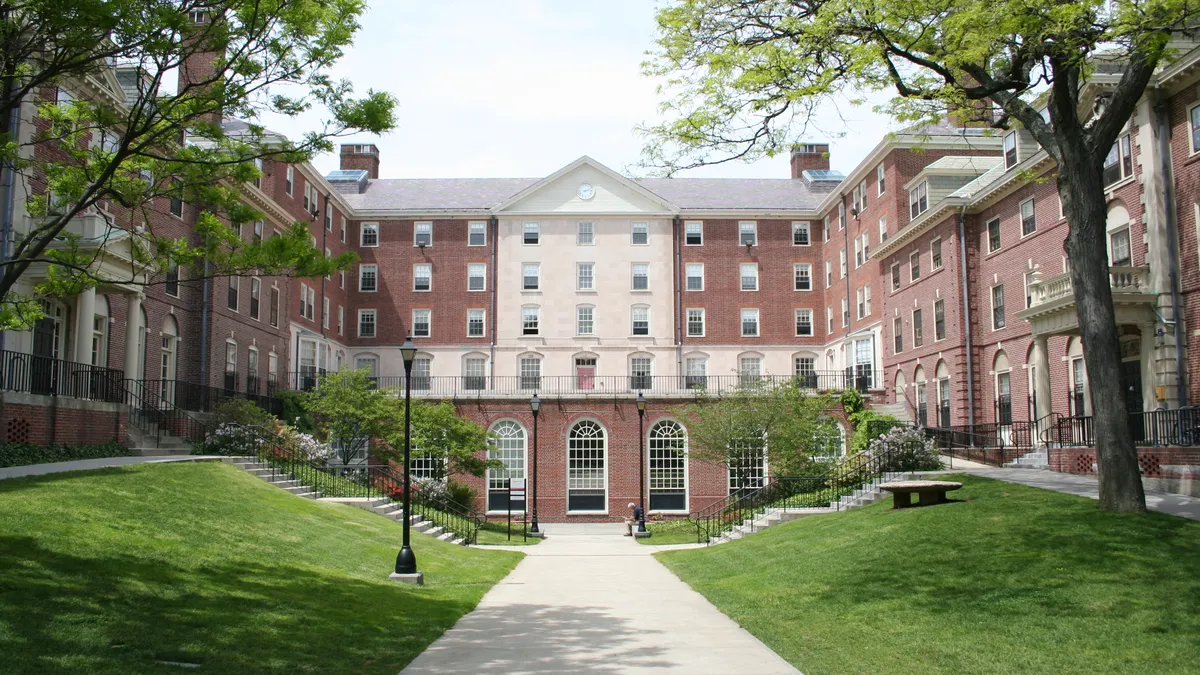Dive Brief:
-
The schools topping U.S. News & World Report's Best Colleges rankings stayed largely the same this year, despite changes to how the publication assesses colleges.
-
U.S. News increased the weight of student outcome measures — which include data on graduation rates and social mobility — from 35% to 40% in its rank-setting formula. It also started ranking schools that do not consider SAT or ACT scores for admission.
-
The rankings measure colleges on their pre-pandemic performance, and experts say the changes to the formula won't much affect where institutions land.
Dive Insight:
Princeton University again nabbed the top spot for the National Universities ranking. Harvard and Columbia universities rounded out the top three. The National Liberal Arts Colleges list was also led by its usual suspects, with Williams, Amherst and Swarthmore taking the first three slots.
Still, U.S. News appears to have responded to criticism from those who say the rankings tend to favor the most-selective institutions. The publication lowered its weighting of the "student excellence" category, which includes data on standardized test scores and high school class standing, from 10% to 7%. And it dropped the alumni giving category from 5% to 3%.
That made room for U.S. News to add two new indicators of graduate debt that account for 5% of the rankings. They include the average total federal debt among students graduating with bachelor's degrees and the share of that group who took out federal loans.
Adding these measures "is a step to holding institutions accountable for the cost of college and the sources of funding available from that school to help students pay for their education," according to a U.S. News document explaining the changes.
Undergraduates at the wealthiest colleges tend to graduate with less federal debt, said Robert Kelchen, a higher education professor at Seton Hall University, in New Jersey and the data manager for Washington Monthly's college rankings. But there isn't much variation in undergraduate federal debt levels at other institutions, Kelchen added, and U.S. News isn't tracking parent or private loans, which could provide a clearer picture of which schools are graduating students with the most debt.
"They have to keep people who buy the publication happy while still responding to some of these societal pressures," Kelchen said, noting that these rankings tend to attract people looking for the most prestigious colleges. "These changes satisfy both of those requirements nicely."
Robert Morse, chief data strategist at U.S. News, said in a statement emailed to Education Dive that the rankings use only federal loans because of the "consistency in how they are reported by schools" and universal private loan data isn't available.
U.S. News is also dropping its longstanding practice of listing colleges as unranked if they don't use SAT or ACT scores in their admissions processes. This change has caused more than 60 schools to be added to the rankings, the publication noted.
Officials explained earlier this year that they are making the change because many colleges aren't requiring or considering exam scores during the pandemic, though it's unclear how many test-flexible policies will become permanent.
Even so, allowing test-blind schools onto the rankings "will remove one roadblock for admissions offices" considering such policies, Bob Schaeffer, interim executive director of FairTest, a group that advocates for equitable use of entrance exams, wrote in an email. "In the past, the publication's refusal to list schools that did not consider ACT/SAT scores … discouraged other institutions from following suit."














